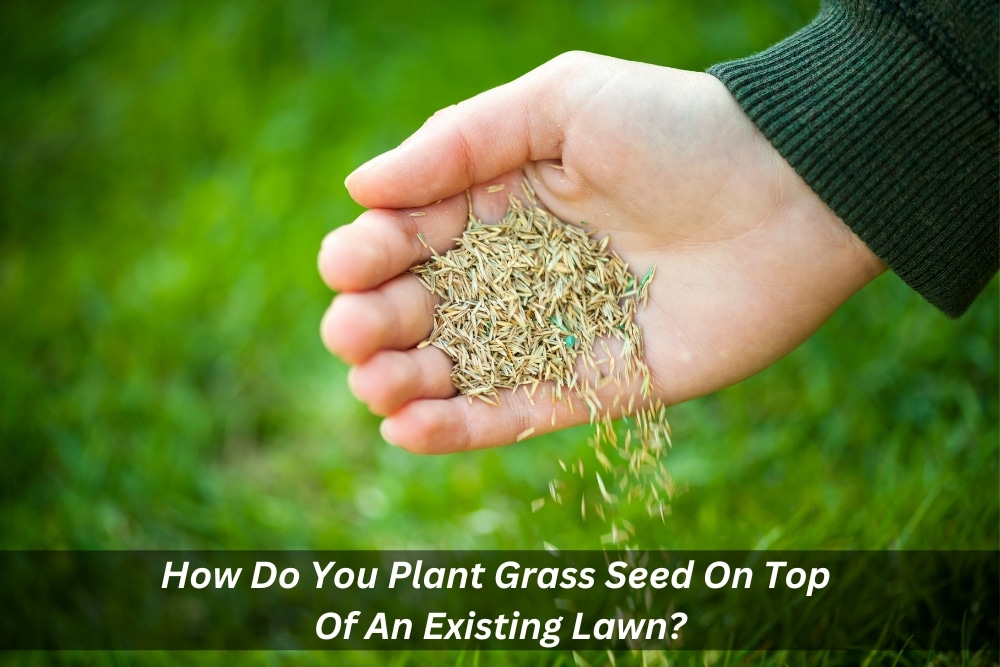Planting grass seed is a common practice among homeowners who want to achieve a lush and healthy lawn. However, planting grass seed on top of an existing lawn can be a daunting task for some. Whether you want to fill in bare patches or improve the overall appearance of your lawn, planting grass seed on top of an existing lawn is a cost-effective solution. In this blog post, we will guide you through the steps on how to plant grass seed on top of an existing lawn and help you achieve that green, healthy lawn you have always dreamed of.
What is the reason for growing grass seed on top of an existing lawn?
Growing grass seed on top of an existing lawn is a common practice that is done for several reasons.
- One of the main reasons is to fill in any bare or thin spots in the lawn. Over time, lawns can become patchy due to wear and tear, weather conditions, and other environmental factors. By adding grass seed to these areas, homeowners can encourage new growth to fill in the gaps and create a more even and lush lawn.
- Another reason for growing grass seed on top of an existing lawn is to improve the overall health and appearance of the grass. Adding new seeds can help to thicken the lawn and make it more resistant to pests, diseases, and other common lawn problems.
- Additionally, grass seeds can help to improve soil health by adding organic matter and nutrients to the soil as it decomposes. This can lead to healthier grass that is better able to withstand environmental stressors and maintain a vibrant green colour throughout the growing season.
Overall, growing grass seed on top of an existing lawn is a simple and effective way to improve the look and health of your lawn without having to start from scratch.
What is the process of growing grass seed on an already existing lawn?
- First, you need to identify the type of grass seed best suited for your lawn. Cool-season grasses such as rye, creeping fescue grass, and bluegrass are best for northern climates while warm-season grasses like bahia and Bermuda flourish in hotter climates. Make sure to purchase high-quality seeds from a reliable source before starting.
- Before you start sowing the seed, use a core aerator or spike aerator to reduce soil compaction so that the roots of your new turf can grow deep into the ground.
- Now it’s time to spread the seed using either a handheld spreader or broadcast spreader depending on how large your area is. Make sure to spread the seed evenly across the entire area.
- To ensure the best germination rate, lightly rake the soil to cover the seeds with a thin layer of soil. This will keep them in contact with the ground and protect them from drying out.
- Water your lawn regularly until you notice new grass seedlings sprouting up through the soil. Make sure to keep the soil moist but not soggy as too much water can drown the seedlings before they have a chance to root properly.
- Once your new grass reaches about an inch deep, you can apply a starter fertiliser or weed control if necessary.
- With regular maintenance, such as mowing and watering, you should have a healthy, lush lawn in no time.
Are there any additional recommendations for how to effectively plant grass seed?
Yes! Here are a few other helpful tips when you want to plant a grass seed:
- Before you start, make sure the soil is not compacted and that it has enough nutrients for the new seedlings to take root. You can do this by using a garden fork or tiller to loosen the soil.
- Make sure to use a high-quality seed mix that is suited to your climate and soil type.
- You can also spread some mulch or straw over the seeded area if you want to protect the seeds from birds or wind. This will also help keep the soil moist during germination.
- Finally, be patient! Grass takes time to grow, and you may have to wait up to 4-6 weeks before your new lawn is ready to be enjoyed.
Conclusion
In summary, planting grass seed on top of an existing lawn is a great way to thicken and improve the overall look of your turf. Just make sure to identify the best type of grass seed for your climate, prepare the soil properly, spread the seeds evenly, and keep the soil moist while waiting for the new seedlings to germinate. With these tips in mind, you should have no trouble growing a healthy, lush lawn in no time!
A1 Gardening Sydney provides turf laying, seed spreading and fertilising services for those looking to improve their lawn’s appearance. Contact us today to learn more about how we can help you get the perfect lawn you’ve been dreaming of!

